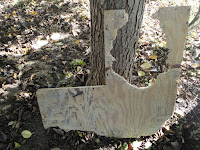There are so many opinions to the question of what is the
right diet for my Parrot? Here’s mine:
PELLET
I’m done.
Seriously though, everyone loves to share tips on
feeding. There are a lot experts in the
arena of parrot feeding. Diets come and
go pretty regularly. If someone were to
take all the articles off the net about the right parrot food and print them I
bet there would be a book the size of an elephant.
I’ve met and talked with a lot of pet bird people. I have come to truly believe people should
adjust their birds to pellet and have a bowl available in the cage all the
time. I feel that pellet should be the
main part of the diet. I wean all my
babies to pellet. Don’t misunderstand me
here, fresh foods are a must and mine get them regular. I could list a page of stuff my birds like to
eat and pretty much get to. I garden
just for my birds. No body, including
me, likes the idea of feeding a parrot the same food every day. I’m not suggesting you do that. Part of the fun of even having a parrot is
watching them eat. BUT, let’s face it,
some days you can’t do all the things you did the day before. When they have pellets in their bowl you can
relax and know they have been well fed.
If you haven’t already, read the label on a bag before you
toss the idea of a pellet diet aside.
The manufacturers have studied, hired real experts, and worked to
produce pellet for us. Disregarding all
their research to me is foolish. Parrots
probably could live long and prosper just on a pellet diet. I really don’t know for sure but, I think
so. I know my dogs and turtles do well
on food from a bag.
AND
(Gasp) . . . drum roll please, here it comes . . .
pellet is
not only super clean, it is “convenient.”
There I said it.
SO
If you decide to introduce your bird(s) to pellets and they
aren’t real thrilled at first, you might try chopping it into fine pieces and
mixing them with what they are used to eating.
Hand pieces to them if they are tame enough to eat from your hand. Put pellets on top their foods so they have
to taste and feel the texture even if they toss it to the floor. Just don’t give up.
Every time I read of someone being frustrated switching
their birds to pellet it reminds me of the battles I used to have getting my
kids to eat new foods, like peas and carrots.
It’s worth the struggle.















